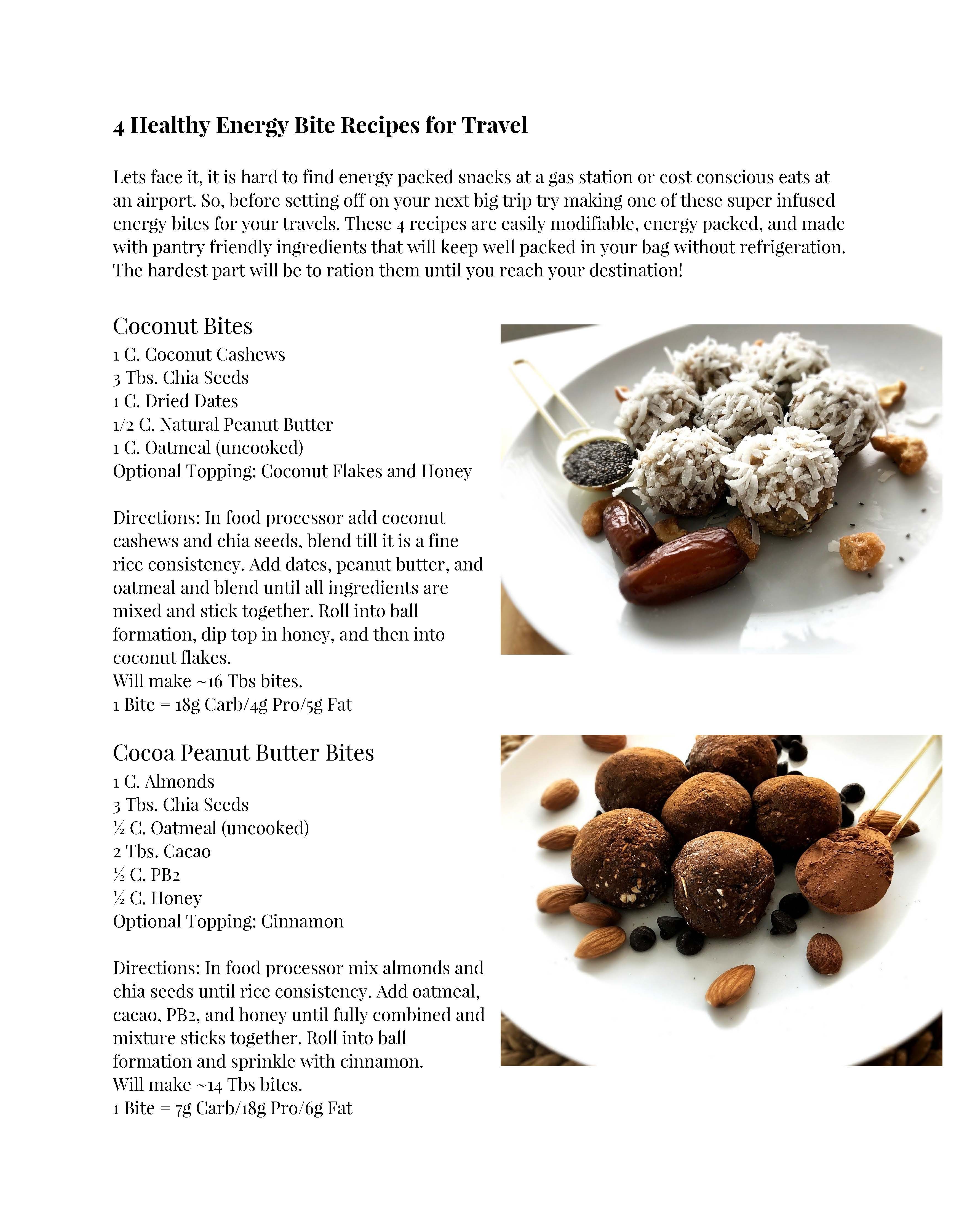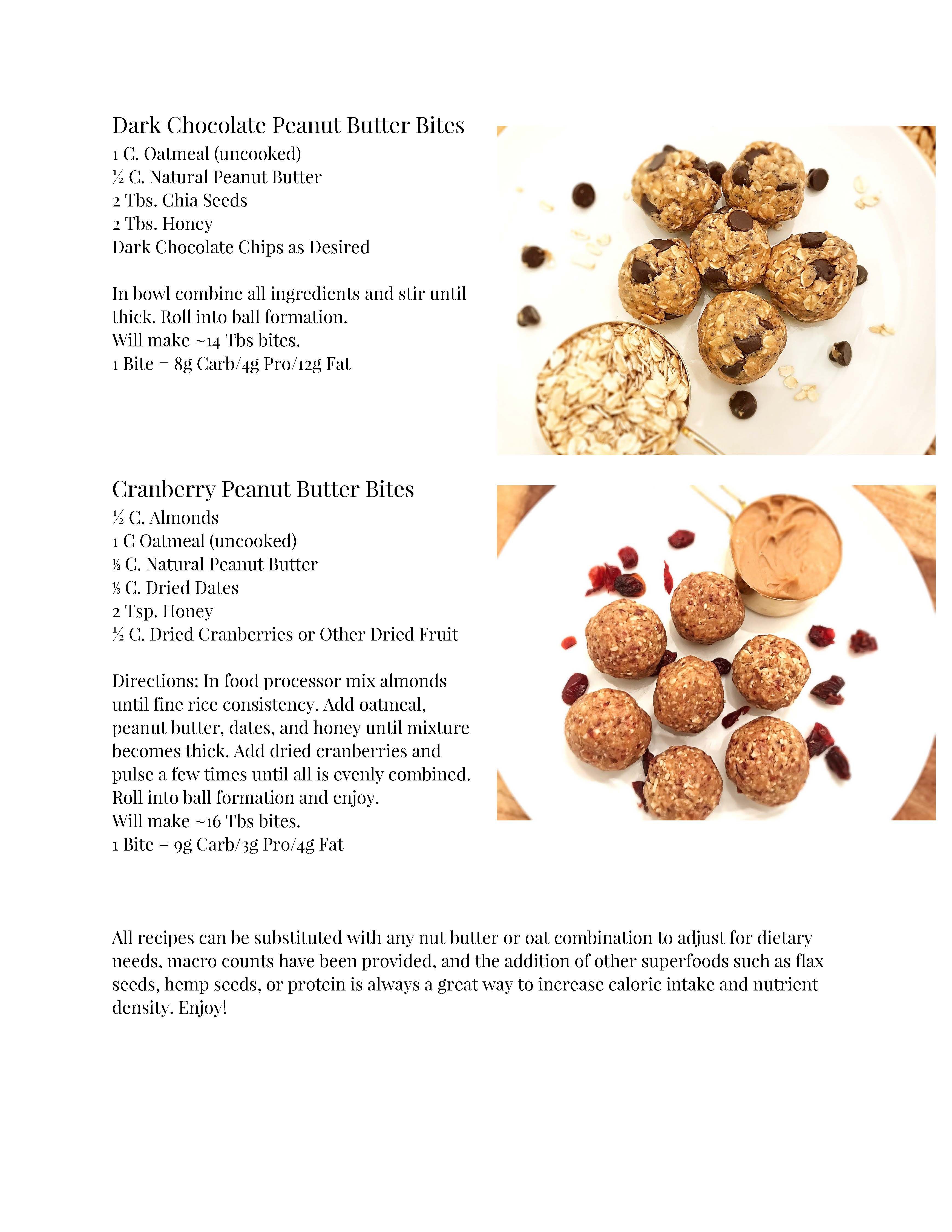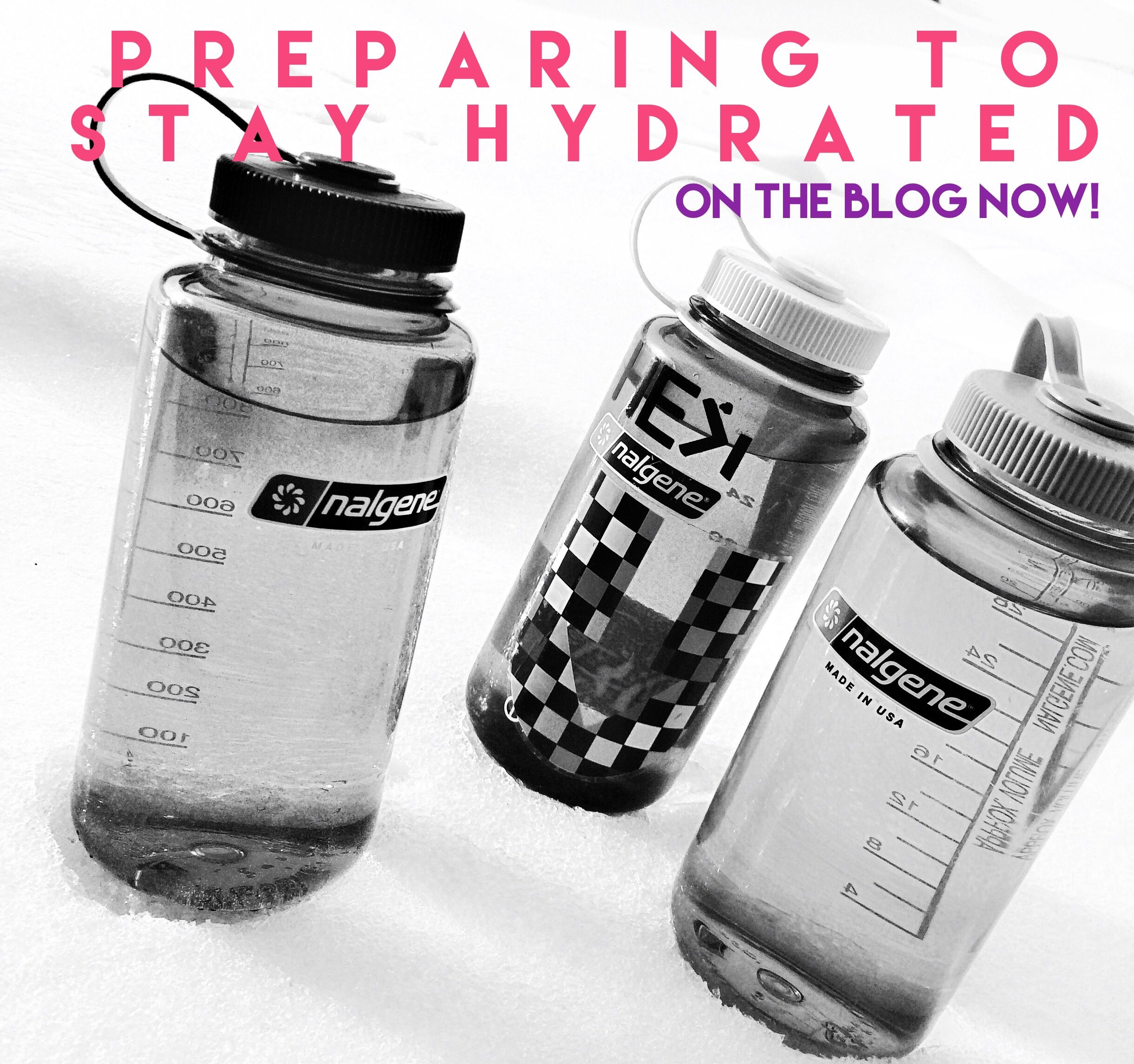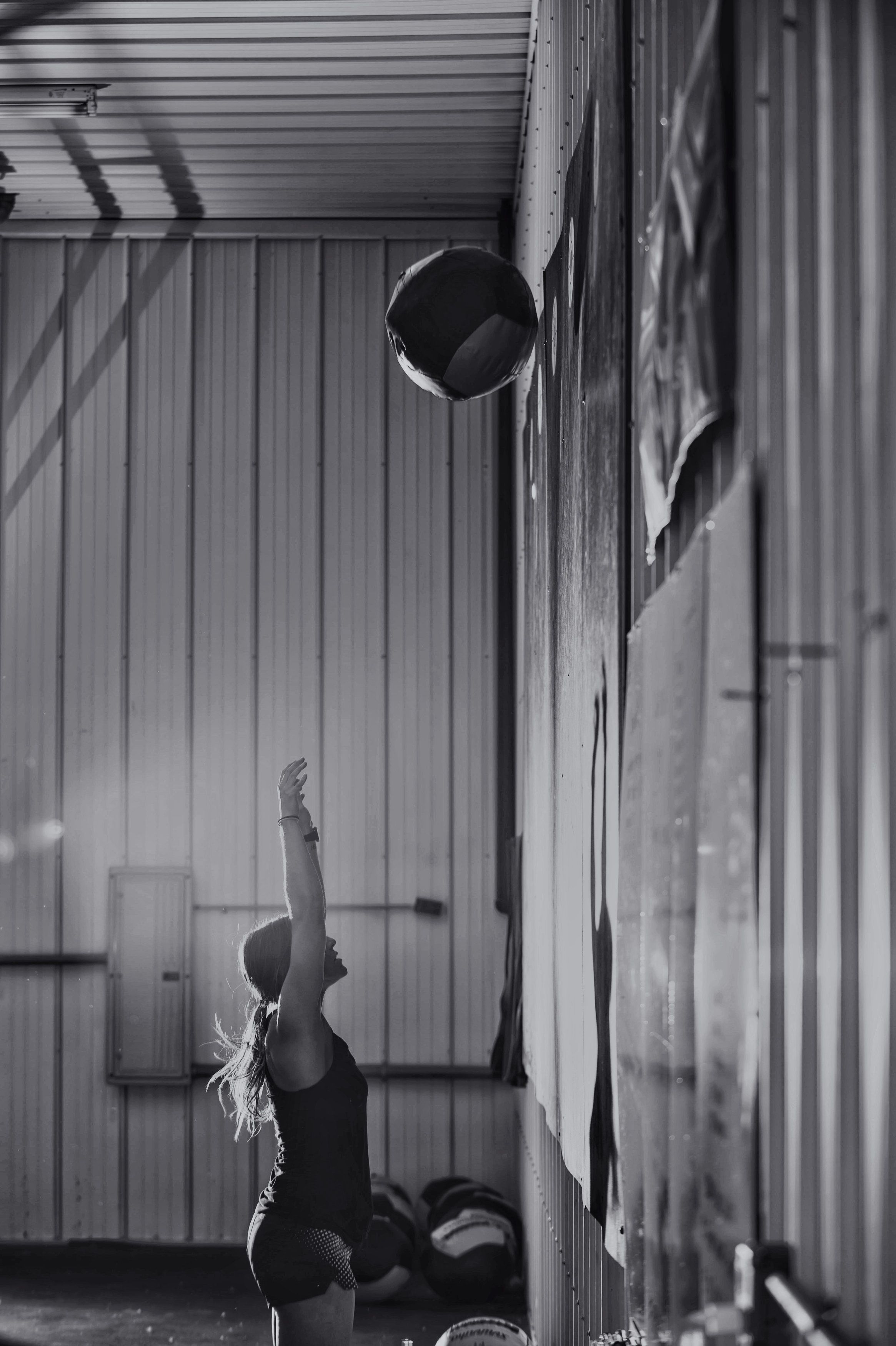By: Courtney Thorne, Olympic Weightlifting Coach


By: Courtney Thorne, Olympic Weightlifting Coach



Written By: Courtney Ford, Co-Owner CrossFit One Shot
We’ve all grown up with the stigma that you need 8 glasses of water per day or ’64 ounces’. That’s it. Done. 8 classes consumed and I’m good to go. While this may balance out in your favor, in reality, the fluid that we intake each day has several varying factors that should influence how much we need to drink. The climate, physical activity demands, how much we’ve sweated and overall body size has EVERYTHINGTODOWITHHOWMUCHWATERYOUNEED! There’s a little more to it than just chalkin’ up you’ve had your 8 glasses or 64 ounces for the day, although that’s a good base to start at. (Don’t worry, I’ll give you a small equation in a little bit, but first I want to educate you.)
The importance of Body Water
All of our cells soak up water. With that being said, water makes up nearly 60% of our body weight. 60%! So that means if you weight 100 lbs, you carry 60 lbs of water; if you weigh 200 lbs, you carry 120 lbs of water. The amount of water we carry is based on how much body fat and muscle mass we have. Our water content depends on body composition because different cells contain different amounts of water. Now, when I think that of that I wonder, where is all of this water coming from and where is it stored?
• Bones contain the least amount holding 22%
• Adipose Tissue (body fat) holding 25%
• Muscle cells holding 75%
• Blood with the highest holding nearly 83%
As Athletes, with 60% of our body weight being made up of water and 75% of that being held in our muscle cells, WE CAN NOT DEPRIVE OUR MUSCLES OF H20.
Fluid Balance
Water comes and goes a lot of different ways. Each day we excrete water via urine, feces, sweat, and expired air. Each day we also take in water from the food we eat and the beverages we drink. Our goal is to balance the intake and balance the output so that we don’t become dehydrated.
On average, humans get about 1 L (4 cups) of water from the food we eat. Of course, this amount depends on our food selections.
• Fruits & Vegetables – have the highest percentage of water (in their raw form)
• “Wet” Carbohydrates – have a fair amount of water (ie. Whole grains, legumes)
• High Fatty Foods – typically have a very low percentage of water (ie. Nuts, seeds, oils, butter)
The equation
There are two ways to estimate your fluid needs and ensure you’re hydrated. One being by body weight, the other being by metabolic rate. We’re going to lay out the equation, estimating your fluid needs by body weight.
With this method, for every kilogram of bodyweight, you’d ingest 30-40 mL of water. So, for example, if you weigh 50kg (100lbs), you’d require 1.5 – 2 L of water per day. And if you’re 100kg (220lbs), you’d require 3-4 L of water per day. See how someone with more body weight requires MORE WATER? So our stigma of ‘x amount of glasses per day’ doesn’t rally up with this equation all the time.

Today, calculate your desired amount of water intake and put it to use! Grab a Nalgene bottle and figure out how many ounces you need to drink, based on the amount of Liters your body requires.
***Remember, this is a general equation and does not take into account added heat, extra activity, and how much we’ve sweated. Modifications may need to be made in the case one of these factors is higher than normal activity or climate has risen.
Time to drink up and eat up, better, folks!
[1] Berardi, John MD and Ryan Andrews, RD, “The Essentials of Sport and Exercise Nutrition,” Precision Nutrition, June 2014, pp 199-200.
 Are you a Flexible Dieter and Freaking out about eating out?
Are you a Flexible Dieter and Freaking out about eating out?
By: Courtney Ford, Co-Owner of CrossFit One Shot
Often times, when we are paying attention to the things that enter our mouth,
no matter what plan we’re on, we freak out about social events or eating out.
WHAT AM I GOING TO DO?
HOW AM I GOING TO MAKE THIS WORK?
I’LL JUST CALL THIS A WASH --- THERE’S NO POINT IN TRACKING
MY FOOD TODAY.
BINGE DAY!
All things that go through our mind, right?
This is crazy when I hear of people freaking out when they’re a flex dieter. The beauty of being a flexible dieter, is being able to be FLEXIBLE! There’s a few really good ways to set yourself up for success when you know you have a dinner planned on a weeknight and aren’t sure how you’re going to fit that Mexican food with chips n’ queso, a margarita and a big ‘ol burrito in your macros.
Gone are the days where we need to avoid certain restaurants or social situations that involve eating out with friends because the food is “unhealthy”. But, where the challenge with eating out often lies is with tracking the macros of what you want to eat.
It’s all about “working backwards” and planning ahead.
Step 1: The day before your dinner or whatever occasion, figure out where you’re going.
Are you familiar with the food that you may be eating? If not, look at the menu online and make a plan.
Most food establishments publish their nutritional information on their various websites and most of these items are in MyFitness Pal---ie. Mashed Potatoes Festival Foods.
Step 2: Plan your day & WORK BACKWARDS.
So, you’ve decided on a few things from the menu – now your job is to see if you can make it fit in your macros & then see what macros you have leftover for the rest of your day.
*TIP: Make sure when planning your dinner leave some wiggle room and estimate quantities on the generous side. It’s always better to overestimate rather than underestimate from a calorie perspective. (I sometimes search on MyFitness Pal for a similar item and if I have 3 choices with the lowest being 400 calories and the highest being 600 calories, I usually go with the highest.)
Step 3: TAKE IT EASY ON DRINKS
Drinking is often a big part of the social aspect of eating out, but a few beers or wines later and you could be at 500 calories in liquid alone, which is all carbs. Allow yourself a drink or two, but take it easy!
Step 4: ADD THE REST OF YOUR FOOD
Once you’ve plugged in your dinner, figure out how much you have leftover for breakfasts, lunches or snacks.
You may need to adjust a few things. Maybe instead of having 4 eggs in the morning, your dinner might only allow you to fit in 2 eggs. Maybe everyday you have Greek yogurt for a snack, but the majority of your carbs and protein are coming from your dinner, so you may need to pass on that for today.
>>>>Now, YOU HAVE YOUR ENTIRE DAY PLANNED BEFORE YOUR DAY HAS EVEN STARTED!
It’s Monday night. And you already have everything planned for your Tuesday. How easy is that?! No stressing about what food is going to enter your mouth tomorrow. Stick to your plan. And be happy about the decisions you planned to make that day!
After all, flexible dieting is a way to eat for life that allows for living. So go out there and LIVE!

Written by: Courtney Ford
People often say that motivation doesn’t last.
Well, neither does bathing. That’s why we recommend it daily.
The story always starts out the same. New Years comes around. We have a whole slew of goals we MUST complete in 2015. We want to eat better. We want to quit smoking. We want to lose the 20 lbs we gained from the holidays. We want to train for a new race. We want to be better people.
The story always ends the same. Two weeks later, we’re “over our new years resolutions” and we would rather sit on the couch, curl up in a ball and watch re-runs of Friends, or push off the goal to quit smoking and save it for another year – anything to stay inside just a few moments longer or to enjoy the dopamine dump that that extra scoop of taco dip gives us.
I get it. It’s cold out. The lack of sun doesn’t help. The couch sounds way too good. And comfort is way more appealing that discomfort. Personally, I just want my feet warm. Warm feet equals staying in UGG boots, not CrossFit Nanos. Staying in my UGG boots equals not working out. For me, that’s not an option. I’m creating a human. A human that will someday rely on me to properly pick them up from the floor, run them around to soccer practice (or whatever the little guy choses to do), to run around the house playing with nerf guns and to in general be active with them. If I don’t stay active, those activities will become extremely difficult and non-existent.
Self-Discipline involves acting according to what you think instead of how you feel in the moment. Often it involves sacrificing the pleasure and thrill of the moment for what matters most in life. Therefore it is self-discipline that drives you to:
• Work on an idea or project after the initial rush of enthusiasm has faded away
• Go to the gym when all you want to do is lie on the couch and watch TV
• Wake up early to work on yourself
• Say “no” when tempted to break your diet
A few things that help me stay on track and hold myself accountable when motivation lacks are:
Visualizing our goals puts it at the top of our priority list every day. If you take nothing else from this article, take that. Visualize. Visualize. Visualize.
Now, who’s ready to commit themselves to their goals? It’s time to be better people.
 The Year of You vs. Your Goals
The Year of You vs. Your Goals
Written by: Courtney Ford
With the New Year, every person across the planet is discovering or writing out their 2015 goals. A clean slate, as most call it, is at the touch of your fingertips. The world is ready and waiting for you to make big changes. 2015 is going to be YOUR YEAR!
But you want to know what stops us from making each year OUR YEAR?
Far too often in today’s culture do we compare ourselves to the people to our left and the people to our right. We live in this culture where we want to be better than the people who surround us; that just because they did a new craft project first, or they ran a new marathon before you did, or they traveled to a different country before you did, your self worth has gone down.
At CrossFit One Shot, we want you to make this year about YOU. How often in life do we really get to think about ourselves? We spend each day thinking about others, helping others and hoping others will love us. When it comes to your goals, MAKE THEM ABOUT YOU. Make them based on what you can already do and what you DREAM of doing.
Goal; the object toward which an endeavor is directed; an end.
CrossFit, at its core, is about setting and achieving goals.
Every time we set foot in the gym, we have a reason we are there. Sometimes the goal is very specific – we want to run a marathon, we want to hit 10 double unders, we want to lift the stretcher being a Paramedic. Other times our goals are very broad – we want to play with our kids more, we want to move better in a sport, we want to lose 20 pounds.
No matter what we do though, our time should be spent working toward a goal.
And not just any goal – OUR OWN GOAL. Not the person to the left or to the right of us’ goal. Our very own unique, specific, tailored to our own skill level goal.
The bottom line though? Whatever the goal is, work has to be put into accomplishing the goal.
Result: a consequence, effect, or outcome of something.
We create goals. And then we expect results.
That’s where a lot of us go wrong. We EXPECT.
Gone are the days of people feeling sorry for you. You want something? YOU NEED TO WORK FOR IT. Too many times we see people feeling sorry for themselves for not getting somewhere, or seeing someone else get there faster – only to look back and see there was no work put in.
Action: the fact or process of doing something, typically to achieve an aim.
It’s time to take action and make SMART goals. Start big and work your way backwards.
One of my goals is to row 500 miles in the year of 2015.
That is the big picture – 500 MILES!
Now to back my way into my goal:
Specific? 500 miles. Instead of saying I want to row lots of miles in 2015.
Measurable? I have a chart in my WOD book where I record each set of miles, the date, what setting I had the rower on and what my pace was at.
Attainable? I know that I need to row 42 miles each month or 10.5 miles per week in order to hit my goal.
Relevant? This is worthwhile because I want to kick my hate of rowing out of my system.
Time-Bound? Specific when the result will be achieved: by December 31, 2015.